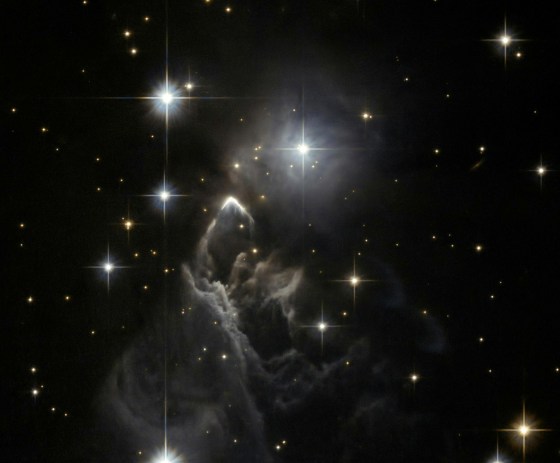Did you know that NASA has a spokesman who talks to dead people? That's not the only thing that's spooky about the space effort. Halloween is the perfect time to touch upon the freaky side of the final frontier.
This week The Washington Post profiled Rob Gutro, the deputy news chief at Goddard Space Flight Center, who happens to be a meteorologist as well as a medium. When he wears his space-agency hat, Gutro deals with research into hurricanes and other types of storms. But in his other life, he tromps through haunted buildings, communes with spirits and snaps pictures of ghostly orbs.
It's not as if Gutro's spiritualist side is a big secret: He's written a book about his experiences, titled "Ghosts and Spirits: Insights From a Medium." And it's not unusual for folks who work at NASA to delve into mysterious phenomena. One of the prime examples is Apollo astronaut Ed Mitchell, who had such a deep spiritual awakening during his 1971 mission to the moon that he went on to establish the Institute of Noetic Sciences and look into UFOs and psychic phenomena.
But Gutro is on less solid ground when he contends that there's a scientific foundation for psychic phenomena. For example, in the Post's profile he notes that due to the First Law of Thermodynamics, energy cannot be created or destroyed. "It can only be transformed, so after we pass, that energy that's within us has to go somewhere," he said. "It can choose to be an earthbound ghost, or it can choose to be a spirit and cross over."
I may not be a medium, but I think I hear physicist Richard Feynman rolling over in his grave.
As for those ghostly orbs, most experts dismiss the bright circles as optical effects caused by reflections off particles of dust or fog. If you think there's more to the orbs or the other spooky phenomena that Gutro has gotten himself into, please feel free to weigh in with your comments below.
Cosmic ghosts galore
The cosmos turns out to have mysteries and ghosts galore, but of a natural rather than supernatural variety. The reflection nebula pictured above is an example. The ghostly star-forming region, about 380 light-years away in the constellation Taurus, was first noted in infrared images taken by the IRAS satellite in 1983 and was given the name IRAS 05437+2502. The Hubble Space Telescope snapped a much sharper picture, but astronomers still couldn't quite figure out what was creating the bright boomerang-shaped feature near the center of the frame.
Right now, the leading hypothesis is that a young star zoomed through the cloud of gas and dust, sparking bright emissions as it passed through. But the fact that the mystery hasn't yet been conclusively resolved led some observers to assume that astronomers were spooked by "Ira's Ghost."

The "Little Ghost Nebula" poses less of a conundrum. Hubble took this picture of the nebula, also known as NGC 6369, in 2002. The image clearly shows the ghostly rings of gas that are being blasted away by a star 2,000 to 5,000 light-years from Earth, in the constellation Ophiuchus. It's that ghostly appearance that gave the nebula its nickname.
The name is apt in an additional way: This is a star that's giving up the ghost. Astronomers call such objects planetary nebulae because they have the rounded appearance of a planet when viewed through a small telescope. But the gaseous shells actually signal the last stages of a sunlike star's life. In 10,000 years or so, the gaseous rings will dissipate, leaving behind a stellar ember that will gradually wink out of existence.
Our own sun will face a similar fate, billions of years from now, and not even the First Law of Thermodynamics can head off the extinction. Now there's a spooky thought. ...
More cosmic ghosts:
- The inside story of a dying star
- Tracing the stages of a star's death
- Colorful nebula in distant star cluster
- New clues to amazing shapes in space
- October's edition of Month in Space Pictures
Connect with the Cosmic Log community by "liking" the log's Facebook page or following @b0yle on Twitter. You can also check out "The Case for Pluto," Alan's book about the controversial dwarf planet and the search for new worlds.
